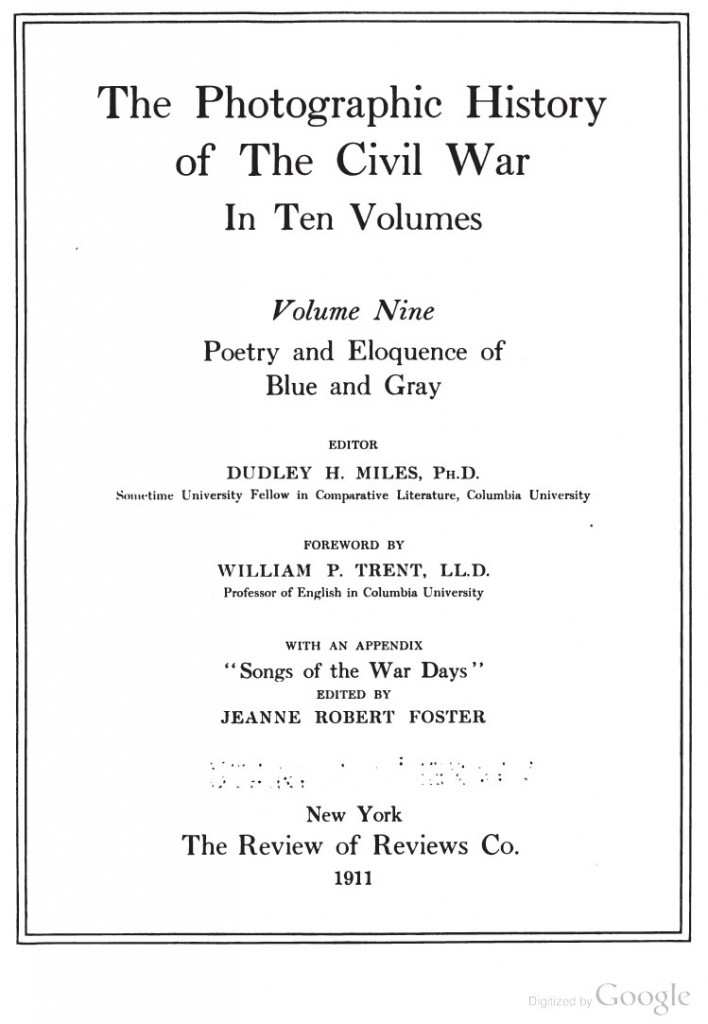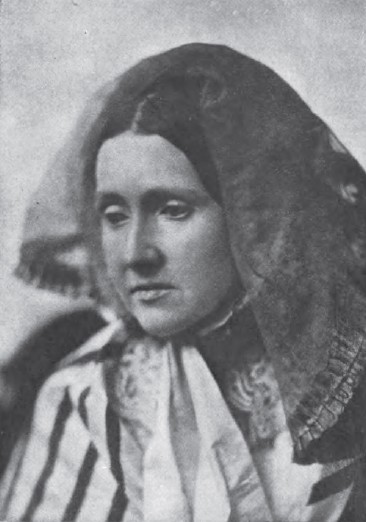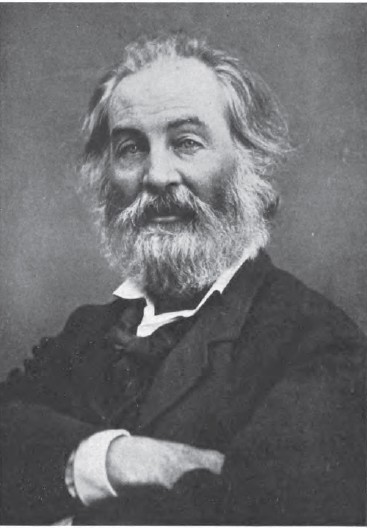Poetry and Eloquence of Blue and Gray
Posted By Norman Gasbarro on February 10, 2011
(Part 10 of 12). Contents of Volume IX of The Photographic History of the Civil War: Poetry and Eloquence of Blue and Gray.
The year 1911 was the 50th anniversary of the beginning of the Civil War. In a memorial to the war, a ten volume set of books was published entitled The Photographic History of the Civil War. This series attempted, through photographs, to do what no other books had previously done – to bring the war close and personal through previously unpublished and unavailable photographs. The series was edited by Francis Trevelyan Miller.
This post is part 10 of a 12 part series and will focus on the contents of Volume IX, Poetry and Eloquence of Blue and Gray.
Contents of Volume IX of The Photographic History of the Civil War.
I. Separation and Reunion. II. Deeds of Valor. III. In Memoriam. IV. Scenes from Soldier Life. V. Wives and Sweethearts. VI. Lyrics. VII. The Lighter Side. VIII. Between Battles. IX. Gettysburg. X. The End of the Struggle. XI. Lincoln. XII. The Heritage. XIII. Brotherhood. Appendix: Songs of the War Days.
Unlike the other volumes in the set, this book has fewer photographs and more text, nevertheless, there are many first-time published photographs and these are properly inserted at appropriate places to complement the poetry and prose of the Civil War.
Two poets who had a great influence on their time are pictured here as examples of the type of content in this volume – although the volume is much more comprehensive than the works of just the famous.
Julia Ward Howe was the author of the Battle Hymn of the Republic. She was born in New York in 1819, the daughter of a banker, and in 1843 she married the philanthropist Dr. S. G. Howe. She assisted him in editing his anti-slavery publications. While in Washington on an anti-slavery mission, she was invited to tour the military camps in Virginia, where during the carriage ride, she sang the song, “John Brown’s Body” to the great delight of the soldiers. Her pastor suggested that she write more appropriate words for the song and as the inspiration came to her, the words of the most famous of all the Civil War songs came forth. After the Civil War she was deeply involved in the women’s suffrage movement. She died in 1910.
Mine eyes have seen the glory of the coming of the Lord:
He is trampling out the vintage where the grapes of wrath are stored;
He hath loosed the fateful lighting of his terrible swift sword:
His truth is marching on.
I have seen Him in the watch-fired of a hundred circling camps:
They have builded Him an altar in the evening dews and damps;
I can read his righteous sentence by the dim and flaring lamps.
His day is marching on.
I have read a fiery gospel, writ in burnished rows of steel;
“As ye deal with my contemners, so with you my grace shall deal;
Let the Hero, born of woman, crush the serpent with his heel,
Since God is marching on.”
He has sounded forth the trumpet that shall never call retreat;
He is sifting out the hearts of men before his judgment-seat;
Oh! be swift, my soul, to answer Him! be jubilant my feet!
Our God is marching on.
In the beauty of the lillies Christ was born across the sea,
With a glory in his bosom that transfigures you and me:
As he died to make men holy, let us die to make men free,
While God is marching on.
Julia Ward Howe
Walt Whitman was born in 1809 and during his career he was an editor and publisher. While traveling in the west of the day (New Orleans to Canada), he produced the first edition of Leaves of Grass, a 96-page start to what would would later become in its final edition what many consider to be the literary achievement of the Civil War. After 1862, he went to Washington to care for his brother who had been wounded at the Battle of Fredericksburg, and then stayed on for the remainder of the war working as an army nurse in the hospitals of Washington. After the war, he served in government employ, eventually moving to Camden, New Jersey, in 1873. He died in 1892 in Camden.
BIVOUAC ON A MOUNTAINSIDE
I see before me now a traveling army halting,
Below, a fertile valley spread, with barns and the orchards of summer,
Behind the terraced sided of a mountain, abrupt, in places rising high,
Broken, with rocks, with clinging cedars, with tall shapes dingily seen,
The numerous camp-fires scattered near and far, some away up on the mountain,
The shadowy forms of men and horses, looming, large-sized, flickering,
And over all the sky – the sky! far, far out of reach, studded, breaking out, the eternal stars.
Walt Whitman
For a free download from Google Books, click here and select “PDF” in the upper right corner of the page. When the “PDF” file opens in your reader, save the file to disk. Use of the file is subject to restrictions that are spelled out on the first page of the PDF. Essentially, the restrictions specify that the digital book may be used for personal, non-profit use only and that the Google Books “watermark” should not be removed from the pages.
Tomorrow, part 11 of this series will examine Volume X, Armies and Leaders.
 ;
;





Comments